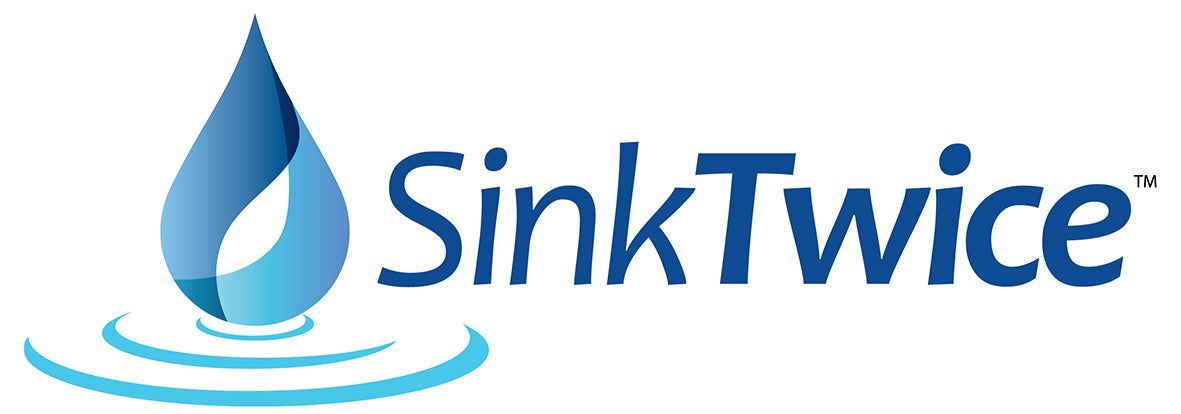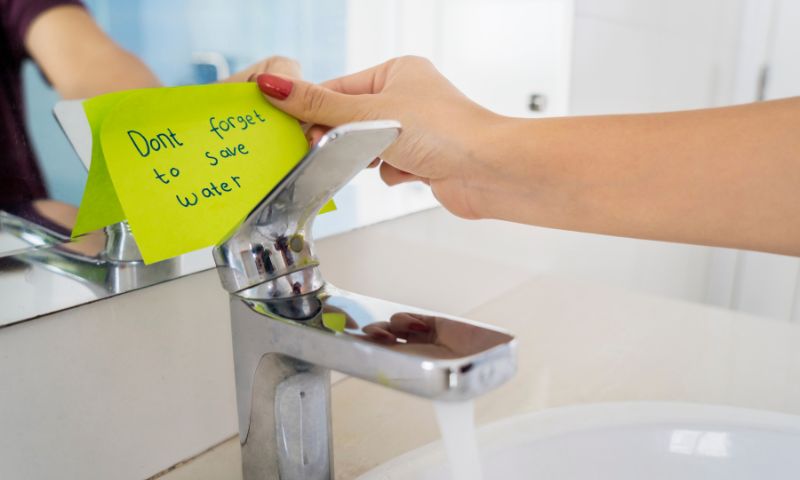For many of us, saving water is much like losing weight. One day you suddenly wake up and decide to become a better human being. You do almost everything you can to stick to the promise you made to yourself. But then you realize you're making too many sacrifices. You start doubting if it is actually worth it. The euphoria fades away, and you give up.
In an interview, Cameron Brick, a Ph.D. Candidate in Social Psychology at the University of California, Santa Barbara, said that most people do not put much effort into saving water because they are not ready to make sacrifices. Plus, they believe their individual actions can't do much.
If you are one of them, you will be happy to know that you don't always have to make great sacrifices to reduce water consumption. This article will brief you on the ten simplest things you can do to save gallons of water every day without making any conscious effort.
Install water-efficient products everywhere
Water-efficient showerheads, faucets, toilets, dishwashers, washing machines, sprinklers, etc., use at least 20% less water than the standard products you may have in your house. They are basically low-flow fixtures that provide a controlled stream of water, so there is less wastage.
If you are in the United States, you can buy WaterSense-labeled products. WaterSense is an EPA's voluntary program. It has partnered with manufacturers and retail partners to manufacture and sell water-efficient, low-flow fixtures. EPA has created specifications that the manufacturers must meet to get a WaterSense label. EPA claims that by simply replacing the showerhead of your bathroom with a WaterSense-labeled one, you may be able to save more than 2700 gallons of water in a year!
Replacing all the plumbing fixtures in your home may not be financially possible. But you can start with the bathroom fixtures and then the kitchen ones because most water consumption happens in these two areas of the house. Replace only a few things at a time, so you don't feel too much pressure on your pocket.
Convert your toilet tank into a water-saving sink
Sink Twice is a toilet tank cover with an inbuilt faucet and sink. This innovative product recycles the water you use for hand washing instead of letting it go down the drain. The faucet of the sink connects with the valve of the tank. Every time you flush the toilet, the valve will redirect the water to the faucet for handwashing, and the soapy water will flow into the tank for refilling. The faucet is automatic and hands-free.
You can install a Sink Twice toilet tank cover on your existing toilet tank, whether it is WaterSense labeled or not. Installation is easy and takes only a couple of minutes. Sink Twice can help you save 20-30% of water every time you use the toilet.
Install aerators on faucets
Aerators cost just a few dollars, but they can help save a lot of water and electricity. You can install them on almost all your faucets, even those about two decades old.
A faucet aerator is a small end-piece with a mesh screen disk. It reduces the amount of water that comes out of the faucet, but, at the same time, it improves the pressure by mixing air with water. Better pressure helps you get the job done quickly without needing too much water.
Install self-cleaning sink in your bathrooms
It is a pretty new water-saving product known as Smarter Sink. It comes with an infrared sensor and a valve. When you are done with brushing or shaving, you need to press the self-clean button. The sink will automatically disperse water and clean itself. You don't need to run the faucet at its full flow. Smarter Sink can clean itself by dispensing water for just 2.5 to 5 seconds. In contrast, typically, you need to run the faucet for 20 to 30 seconds. You may not realize that reducing the faucet running time by just 20 seconds for 8 times a day can save gallons of water annually.
Start rainwater harvesting
Suppose you have a large property with a lot of scope for saving rainwater. In that case, you can hire a plumber or a trained rainwater harvesting professional to get a clear idea of what needs to be done and how. Small homeowners can do it themselves by using rainwater barrels.
Collecting and saving rainwater in barrels is the easiest, cheapest, and highly effective method of rainwater harvesting. EPA has created numerous how-to guides for people who want to conserve the free water and use it later for watering the lawn or cleaning the car.
Cut down your shower times
On average, we take about 8 minutes in the shower, and a standard showerhead disperses 2.5 gallons of water per minute. If you change your showerhead to a WaterSense one whose max flow is 1.5 gallons per minute and if you reduce your shower time to just 5 minutes, you can save 7.5 gallons of water. So, you spend about 20 gallons of water every day only for showering.
Follow the navy shower technique and shower with lukewarm water to keep your showers short and effective.
Use compost pit instead of garbage disposal
While garbage disposal is a quick and easy method of disposing of food waste, it requires a lot of water. So, it makes sense to compost the waste instead. Composting requires dedication because you must collect and put all the waste in the bin/pit daily. However, it not just helps save water but also provides you with organic manure for your lawn. You can buy a compost bin and watch YouTube videos on how to get started.
Use full loads on the washing machine and dishwasher
Even if you run small loads, the machine still uses the same amount of electricity and almost the same water as when you fully load it. If you have a small load that needs to be cleaned urgently, you can hand wash them.
Turn off the faucet while brushing or lathering your hands
The faucet should run only when you need water. Once you have wet your brush or hands, turn the water off and brush or lather up your hands. When you are done, turn on the faucet and rinse. You can save up to 200 gallons of water per month by only changing these two habits.
Fix leaks
Did you know around 10,000 gallons of water is wasted due to leaks every year from just one household? EPA hosts 'Fix a Leak Week' every year to spread awareness about this major issue. If you notice obvious signs of leakage, such as the dripping of water, mold, mildew, peeling, blistering paint, etc., call a plumber as soon as possible.
Conclusion
The above-mentioned water-saving measures are straightforward to adopt, as they do not require compromising your hygiene and comfort. They are the least things you can (and must) do to delay/prevent a water crisis. If you have any easy-to-adopt water-saving idea that you have been using, do share with us so together we can make the world a livable place for the next generations.

